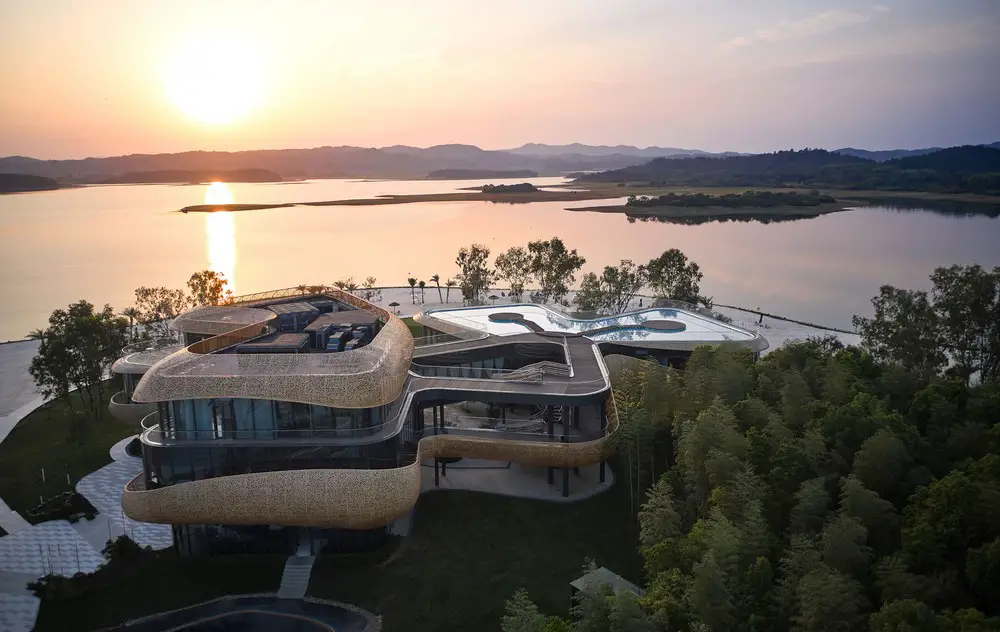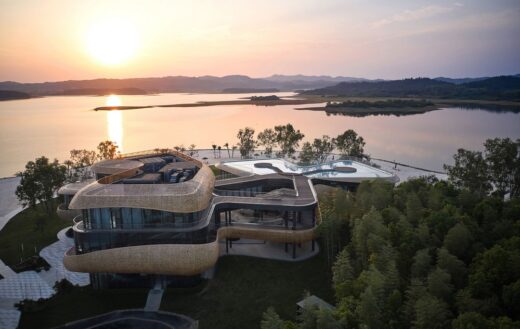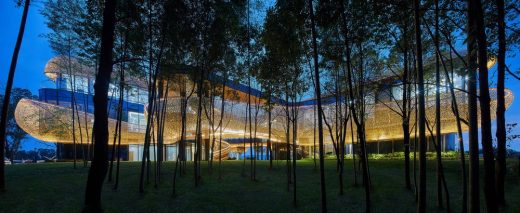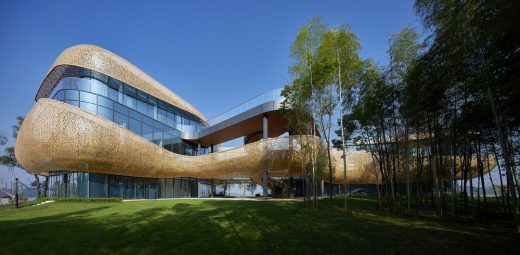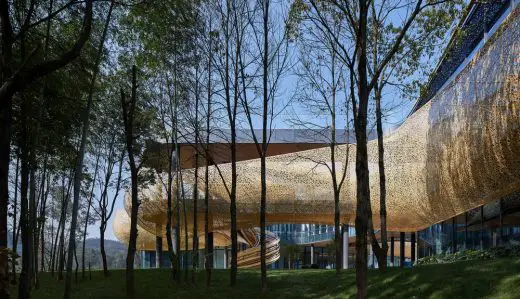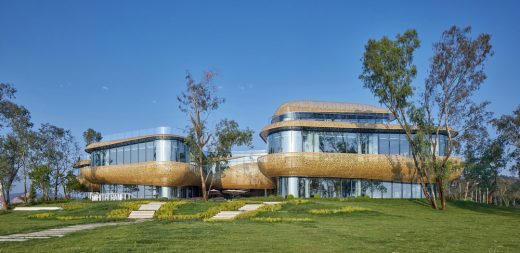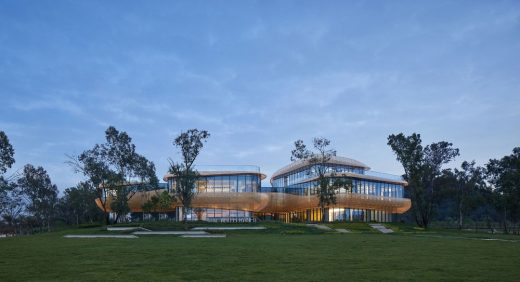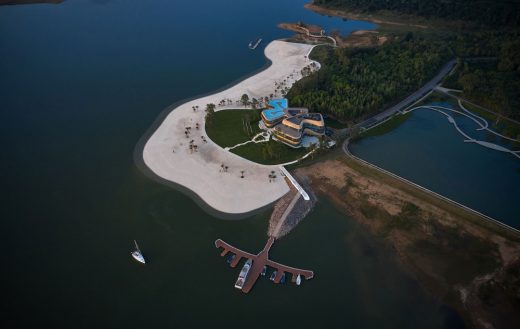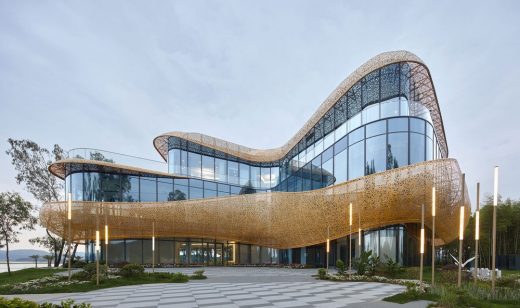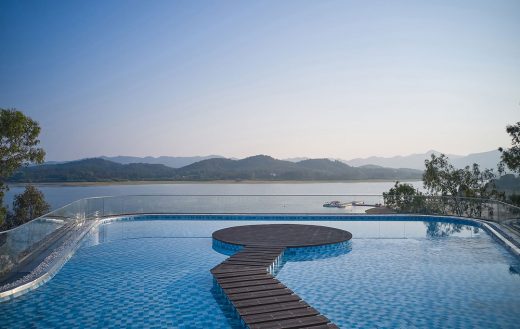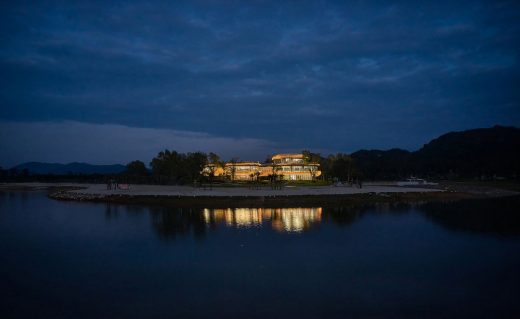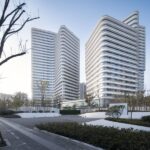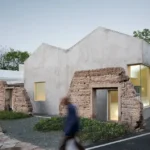White Crane Lake Visitor Centre, Jiangxi Province Architecture, Chinese Architecture Images
White Crane Lake Visitor Centre in Jiangxi
5 September 2023
Design: Archperience Design
Location: Yingtan City, Jiangxi Province, China
Photography:Jianghe Zeng
White Crane Lake Visitor Centre
Located adjacent to Yingtan City, Jiangxi Province, White Crane Lake covers an area of 10 square kilometers and boasts panoramic views of the horizon, bamboo forests on its shores, calm waters, and a vast blue sky above, creating a tranquil and poetic atmosphere for visitors there.
The Visitor Center is the centerpiece of a comprehensive development initiative for White Crane Lake. The challenge for the designers was placing a stylistically modern cultural building aimed at increasing tourism, in a natural environment defined by its quiet ambience. The project had a multitude of functional requirements to fulfill, while balancing the need to elegantly coexist with a landscape of forests, mountains, and the lake itself.
Design Concept
When the architect Jin’ang Yang was first formulating his design approach to the project, a simple solution would have been to take the materials and forms of the existing local houses in Jiangxi – and then abstracting and translating that language, essentially reinterpreting traditional architecture with a modern approach. However, considering that the building’s program requires nearly 3,000 square meters of area, it was quickly acknowledged that the appearance of a new, large-scale traditional Chinese-style building on the water’s edge would be visually disturbing and incongruous with the nature surrounding it.
Upon visiting the site for the first time, the architect’s intuition and experience came into play and a general design approach was decisively determined. Rather than overtly associating with the local residential architectural style or excessively emphasizing traditional materials and methods of construction, the new building would instead accentuate the natural qualities and atmosphere of the site of White Crane Lake itself.
The Visitor Center is located on a tidal flat, surrounded by the lake on the north, south, and west sides of the site, with an extensive bamboo forest to the east. As the sun rises in the early morning, the lake is shrouded in dense clouds and mist which gently disperse themselves in the surrounding forests. Visitors walking through the forest at this time of day have the impression of simultaneously walking through trees and clouds, high in the sky.
In response to these phenomena, the architect proposed the design concept of “Bamboo Clouds by the Water”, as a means of evoking this fleeting and deeply poetic early morning atmosphere, and integrating the four site elements of water, shore, bamboo and cloud, to architecturally express it.
In order to reduce its intervention on the environment, the volume of the building adopts a decentralized layout, so that its overall form is divided into a series of connected volumes which effectively reduces its perceived visual scale. The building’s design also incorporates rounded forms and curves, softening its relationship with its surroundings and giving the impression of flow and movement – the project invites visitors to stroll around it in order to take in its overall design, with the views of its form and environment constantly changing with every step, unfolding like a traditional Chinese scroll painting on the lake.
Creating the Building’s Skin
The scheme incorporates a transparent, undulating glass volume with a second layer of “bamboo skin”. The continuous skin appears to float over the glass volume, analogous to a gentle cloud of bamboo by the water – while formally, it integrates the separate building masses, giving the building a sense of fluidity, continuity, and integration with nature.
The form of the woven “bamboo skin” was developed according to an analytical design process: first, the defining line of the building’s envelope was established according to programmatic and formal considerations. Following this, secondary points along the envelope were chosen as a basis for the undulations of the skin, according to the building’s functions and the particular view of the landscape at each point – resulting in the semblance of a floating bamboo cloud from the exterior, and ensuring the best possible views from the interior public spaces.
In the process of developing the final form and texture of the woven “bamboo skin”, the architect conducted a series of schematic explorations, looking at various potential patterns which could be incorporated. After considering horizontal and vertical grid-like versions of the skin, as well as an option of a series of interconnected pyramidal forms, a large number of computer analyses were made using Grasshopper software. In the end, the lightest option was chosen for its clear, translucent quality, and practical feasibility as a “woven” texture for the building’s skin.
Extensive consultations regarding the building skin were made with both the client and suppliers, while significant on-site testing was also conducted in order to ensure durability and the desired visual and tactile effect. In the end, the designer finally decided to adopt a special surface-treated metal alloy, which provides a robust material with a strong resemblance to natural bamboo. Although it does not possess the tactile qualities and soft touch of natural bamboo, it was chosen for its long-term viability, ease of maintenance, and overall cost. For a modestly scaled public building, it was deemed to be the best solution by all parties involved.
The skin is composed of a diamond-shaped grid which serves as a base layer, and a densely interspersed woven layer, which is supported by a series of curved galvanized steel pipes. The curvature of each steel pipe corresponds to the curvature of the skin. The pipes are vertically spaced at 1500mm intervals to ensure visual consistency of the curtain wall. Through the careful combination of controlling the number of grid nodes and a completely manual weaving process to ensure a degree of randomness, the final result successfully achieves the “bamboo cloud” effect that the architect had imagined from the outset.
A comprehensive lighting system has been integrated into the building’s outer skin, so that when the sun goes down and darkness sets in, the complex external latticework brilliantly lights up. The building appears to shine, recalling a bamboo lantern floating on the lake, creating a visually memorable scene for visitors to the site.
Whirlpool Staircase
In the courtyard enclosed by the building volume and a series of elevated walkways, the architect has carefully placed a spiral staircase: it allows visitors to ascend to the second-floor viewing platform from ground level, but also provides a strong visual focus for the courtyard space overall. Its concentric circular steps with changing radii and variegated side railing create a dynamic, complex shape which provides a creative tension with the other elements of the space.
Rooftop Pool
A borderless pool has been incorporated into the roof terrace on the second floor, which has been designed so that the surface of its water seems to blend with the distant blues of the lake and sky beyond when looking over and across it.
Function
The visitor center is divided into a number of clearly legible volumes, whose functions include a general reception area, restaurant, conference space, and VIP Club, among others.
The reception hall is located in the southwest portion of the site to offer convenient accessibility, the restaurant occupies the northwest side which offers the best views of the landscape, administration is in the quieter southeast corner, and the VIP Club is placed on the top floor to maximize views of the lake.
Conclusion
The architect took on the project with the intent of applying an approach informed by a kind of poetic imagination, ultimately arriving at the concept of “bamboo clouds on the water”, allowing the new building to gently integrate with the surrounding mountains and forest, seamlessly taking its place among the natural elements of the area. The mist that rises from the lake in the early morning is transformed into an edifice which seems to hang in the air, receding into floating clouds of bamboo on the shore.
White Crane Lake Visitor Centre, Jiangxi, China – Building Information
Project Name: White Crane Lake Visitor Center
Project Location: White Crane Lake, Yingtan, Jiangxi Province
Site Area: 650 sqm
Architecture Area: 362 sqm
Design Period: 2021.08 – 2022.6
Construction Period: 2021.12 – 2023.5
Project Architect: Jin’ang Yang
Design Team: Chuanhui Huang, Zhendong Wang, Zheng Zhang, Huijuan Wang
Design Institution: Archperience (Beijing) Design and Consulting Co.
Interior Design: Archperience (Beijing) Design and Consulting Co.
Lighting Design: Jiangxi Zhongye Landscape Engineering Co.
Landscape Design: Jiangxi General Institute of Architectural Design and Research
Developer: Jiangxi Guogui Culture & Tourism Development Co.
Main Materials and Brands :
Metal alloy (Special surface-treated with bamboo texture)
Glass curtain wall
Dark grey aluminium plate
Photography:Jianghe Zeng
Photo credits: Jianghe Zeng
White Crane Lake Visitor Centre, Yingtan City, Jiangxi Province images / information received 050923
Location: Yingtan City, Jiangxi Province, China
Chinese Hotel Designs
Contemporary Hotel Architecture in China
Oxyrest Villa, Jinghong City, Xishuangbanna, Yunnan Province, China
Design: Zhang Can and Li Wengting
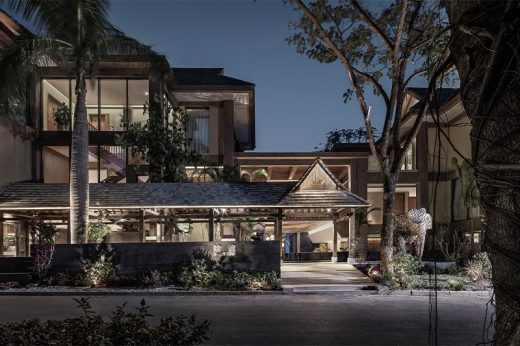
photograph : Wang Ting
Oxyrest Villa, Xishuangbanna Hotel
Villafound Jade Hotel Lijiang Lodge
Architect: Nie Jianping
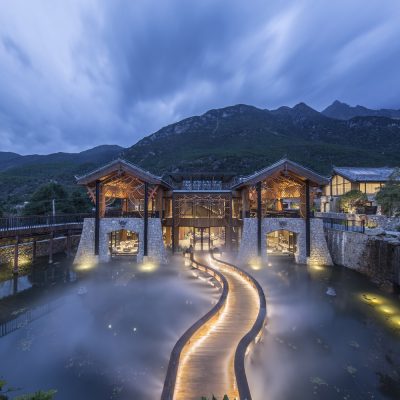
photograph : Chen Weizhong © Nie Jianping
Villafound Jade Hotel Lijiang Lodge in Yunnan
Chinese Architecture Designs
Contemporary Architecture in China
Pu Zao Restaurant, Tongde Plaza, Kunming
Architect: Yiduan Shanghai Interior Design
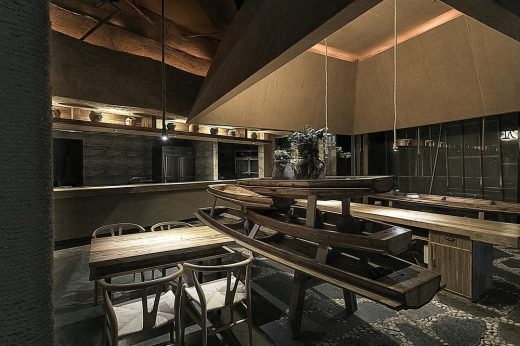
photograph : Xu Xu-Juns
Pu Zao Restaurant in Yunnan
Museum of Handcraft Paper, Gaoligong, Yunnan Province, China
Design: Trace Architecture Office
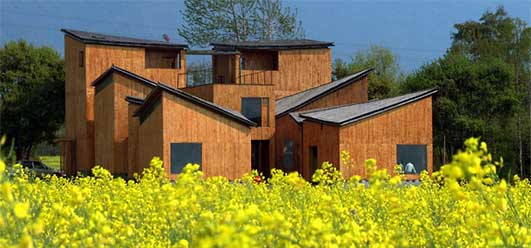
photo : AKAA
Museum of Handcraft Paper Yunnan Building
Chinese Architecture
– chronological list
Chinese Architect – Design Practice Listings
Beijing Architecture Walking Tours
Comments / photos for the White Crane Lake Visitor Centre, Jiangxi Province page welcome

